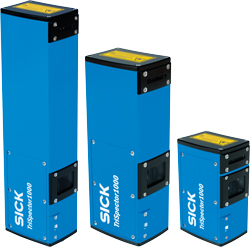 In the high-speed packaging industry the most common quality issues can easily be resolved with automated quality checks using vision-sensor technology.
In the high-speed packaging industry the most common quality issues can easily be resolved with automated quality checks using vision-sensor technology.
Three of the most common are:
- Missing caps, lids or open containers;
- Misapplied labels;
- Incorrect labels.
Vision sensors, like the TriSpector1000 from SICK, are specialized quality-control tools that combine a machine-vision camera with on-board intelligence optimized for optical-inspection tasks.
Incorrect Caps, Missing Lids, and Open Containers
Containers with liquids must be capped or sealed, or leaks could occur. Leakage can cause production problems, contaminated content and dissatisfied customers. The critical moment is when the lid or cap is attached to the container after it is filled. A cost-efficient way to eliminate the problem is to automatically verify the lid’s integrity on the production line and to reject any faulty products. Vision sensors provide a simple and cost-effective solution. To check for unsealed or damaged containers,  a vision sensor can be taught to look at the container’s overall size and shape. If the container is undamaged and properly sealed, the size and shape will be within tolerances of the known-good container. If not, the result will trigger an output to reject the container.
a vision sensor can be taught to look at the container’s overall size and shape. If the container is undamaged and properly sealed, the size and shape will be within tolerances of the known-good container. If not, the result will trigger an output to reject the container.
Detect Missing or Misapplied Labels
A product’s brand identity is often on the label. A cost-efficient way to ensure that expectations will be met is to automatically check for missing or misapplied labels. To check for a missing label, the vision sensor counts the number of pixels of the correct grayscale level in the area of interest. If the label is missing, or out of position the pixel count will be off.
Detect Wrong Labels
Similarly, to check if the label is incorrect, a vision sensor does not need optical character recognition to tell the difference between a box of breakfast pastries marked “APPLE” and one marked “BLUEBERRY.” Much simpler, faster, and more easily programmed tests will do. The use of advanced pattern matching tools allows users to check the label to make sure it matches the type of pastry being produced. This type of check can be very important when dealing with products that could contain allergens. A product with the wrong label could be a health risk to a customer.
![]() For more information, download the full white paper.
For more information, download the full white paper.





